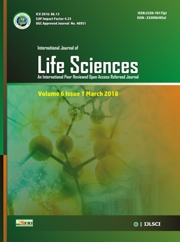Research Article
Volume 8 |Issue 6| November-December 2020 First published: 07 December 2020
Forecast Energy transition between Renewable and Non-Renewable Energy sources for efficient Electricity Generation
Soumalya Bose1*, Rwitoban Ghosh1, Anindya Sen2
1Electronics and Communication Engineer | 2Professor, Department. of Electronics and Communication Engineering, Heritage Institute of Technology, West Bengal, India
*Corresponding Author, 97bosesoumalya.official@gmail.com
Abstract
Keywords:Suddha, Energy forecasting, Non-Renewable source, Renewable source, Conventional source, Electricity generation.
Editor: Dr.Arvind Chavhan
Cite this article as:
Soumalya Bose, Rwitoban Ghosh, Anindya Sen. Forecast Energy transition between Renewable and Non-Renewable Energy sources for efficient Electricity Generation, Int. Res. Journal of Science & Engineering, 2020, Volume 8(6): 201-211.
Copyright:
Open Access This article is licensed under a Creative Commons Attribution 4.0 International License, which permits use, sharing, adaptation, distribution and reproduction in any medium or format, as long as you give appropriate credit to the original author(s) and the source, provide a link to the Creative Commons license, and indicate if changes were made. The images or other third party material in this article are included in the article’s Creative Commons license, unless indicated otherwise in a credit line to the material. If material is not included in the article’s Creative Commons license and your intended use is not permitted by statutory regulation or exceeds the permitted use, you will need to obtain permission directly from the copyright holder. To view a copy of this license, visit http://creativecommons.org/ licenses/by/4.0/
References
1. “Air Pollution”, World Health Organization, 2020.
2. “State of Global Air Report 2019”, Health Effects Institute, 2019.
3. Olivia Rosane, “Polar Ice Caps Melting Six Times Faster Than In The 1990s”,2020.
4. Pengwei Su, Xue Tian, Yan Wang, Shuai Deng, Jun Zhao, Qingsong An, Yongzhen Wang, “Recent Trends in Load Forecasting Technology for the Operation Optimization of Distributed Energy System”, energies – MDPI, 2017.
5. Yeqi An, Yulin Zhou, Rongrong Li, “Forecasting India’s Electricity Demand Using a Range of Probabilistic Methods”, energies – MDPI, 2019.
6. “Wind Turbines: How many blades?” Danish Wind Industry Association, 2003.
7. “Density of air”, Wikipedia, 2020.
8. Amy Harris, “The Average Daily Wind Speed”, Sciencing, 2019.
9. “Wind Energy Math Calculations”, Minnesota Municipal Power Agency.
10. “Wind Turbine Power Coefficient”, FT Exploring Science & Technology.
11. Vijayalaxmi Kinhal, “Efficiency of Wind Energy”, Green Living.
12. Asis Sarkar, Dhiren Kumar Behera, “Wind Turbine Blade Efficiency and Power Calculation with Electrical Analogy", International Journal of Scientific and Research Publication, Vol. 2, 2012.
13. Joseph A Nathan, Vijay A Singh, “The Design of a Nuclear Reactor”, Resonance – Journal of Science Education, 2016.
14. “Calculation of Hydroelectric Power and Energy”, POWER Calculation.
15. “Water Density”, Water Science School.
16. “Hydroelectricity”, Open Learning.
17. Weijia Yang, Jiandong Yang, Wenchen Guo, Wei Zeng, Chao Wang, Linn Saarinen, Per Norrlund, “A Mathematical Model and Its Application for Hydro Power Units under Different Operating Conditions”, energies – MDPI, Vol. 8, doi:10.3390/en80910260, 2015.
18. “Photovoltaic Lighting”, NLPIP, Vol. 9, Issue 3, 2006.
19. “How to calculate annual solar energy output of a photovoltaic system?” Photovoltaic-software.
20. Frank Veroustraete, “PV Panel Tilt relationship”, Researchgate, 2015.
21. Kris Walker, “Is Tidal Power a Viable Source of Energy”, Azo Cleantech, 2013.
22. “Tidal Range”, SurgeWatch.
23. Shaikh Md., Rubayiat Tousif, Shaiyek Md., Buland Taslim, “Tidal Power: An Effective Method of Generating Power”, International Journal of Scientific & Engineering Research, Vol. 2, Issue 5, 2011.
24. Benny Lokombanua Maluegha, Dr. Trevor Pryor, “Calculation of Gross Electrical Power from the Production Wells in Lahendong Geothermal Field in North Sulawesi, Indonesia”, Murdoch University, 2010.
25. Karol Tucki, Marek Klimkiewicz, Remigiusz Mruk, Piotr Piqtkowski, “Design of Digester Biogas Tank Part I: Biogas Calculator – Tool to Perform Biogas Energy Calculations”, TEKA COMMISSION OF MOTORIZATION AND ENERGETICS IN AGRICULTURE, Vol. 15, 2015.
26. “The amount of energy released in burning 1 Kg coal”, Brainly, 2019.
27. “Energy Policy of India”, Wikipedia, 2020.
28. “Per Capita Power Consumption”, Press Information Bureau Government of India Ministry of Power, 2011.
29. “How many joules are in a kilogram of coal?” Study.
30. “Calculation of CO2 emissions”, University of Exeter.
31. “India’s carbon dioxide emissions up 5 %”, THE HINDU, 2019.

